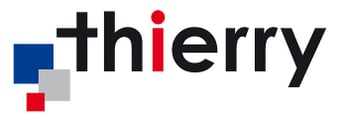Dry & Wet Etching - Advantages & Disadvantages of Plasma Etching & Wet Etching
Advantages and Disadvantages of Dry Etching (Plasma Etching) and Wet Etching
 The advantages of wet etching processes are relatively fast with high etch rates. The simple equipment baths or spraying of wet chemistry can have high selectivity. The wet process typical etching agent are liquid solvents, corrosive leeches and acids. The process equipment is typically an immersion tank or spray system of the chemistry of choice. However, there are many disadvantages. Wet etching is generally isotropic, which results in the etchant chemicals removing substrate material under the masking material at the same rate as the bulk etch. Wet etching also requires large amounts of etchant chemicals because the substrate material has to be covered with the etchant chemical. Furthermore, the etchant chemicals have to be constantly replaced in order to keep the same initial etching rate as the etch chemistry loads with etched byproduct. As a result, the chemical and disposal costs associated with wet etching are relatively high.
The advantages of wet etching processes are relatively fast with high etch rates. The simple equipment baths or spraying of wet chemistry can have high selectivity. The wet process typical etching agent are liquid solvents, corrosive leeches and acids. The process equipment is typically an immersion tank or spray system of the chemistry of choice. However, there are many disadvantages. Wet etching is generally isotropic, which results in the etchant chemicals removing substrate material under the masking material at the same rate as the bulk etch. Wet etching also requires large amounts of etchant chemicals because the substrate material has to be covered with the etchant chemical. Furthermore, the etchant chemicals have to be constantly replaced in order to keep the same initial etching rate as the etch chemistry loads with etched byproduct. As a result, the chemical and disposal costs associated with wet etching are relatively high.
Some of the advantages of dry etching are its capability of automation, reduced material consumption, the ability to use different etch gases with very different process settings in the same tool with little to no hardware change over time. This process is also performed away from the operator in the vacuum chamber producing a condition of good industrial hygiene. Dry etching (e.g., plasma etching) chemistry disposal costs less and is easier to dispose of the by-products compared to wet etching. Some of the disadvantages of plasma etching: typically it is a batch process, and it is performed in a vacuum chamber.
To learn more about etching, check out our eBook titled "Plasma Etching and Cleaning Strategy for Better Product Quality."

